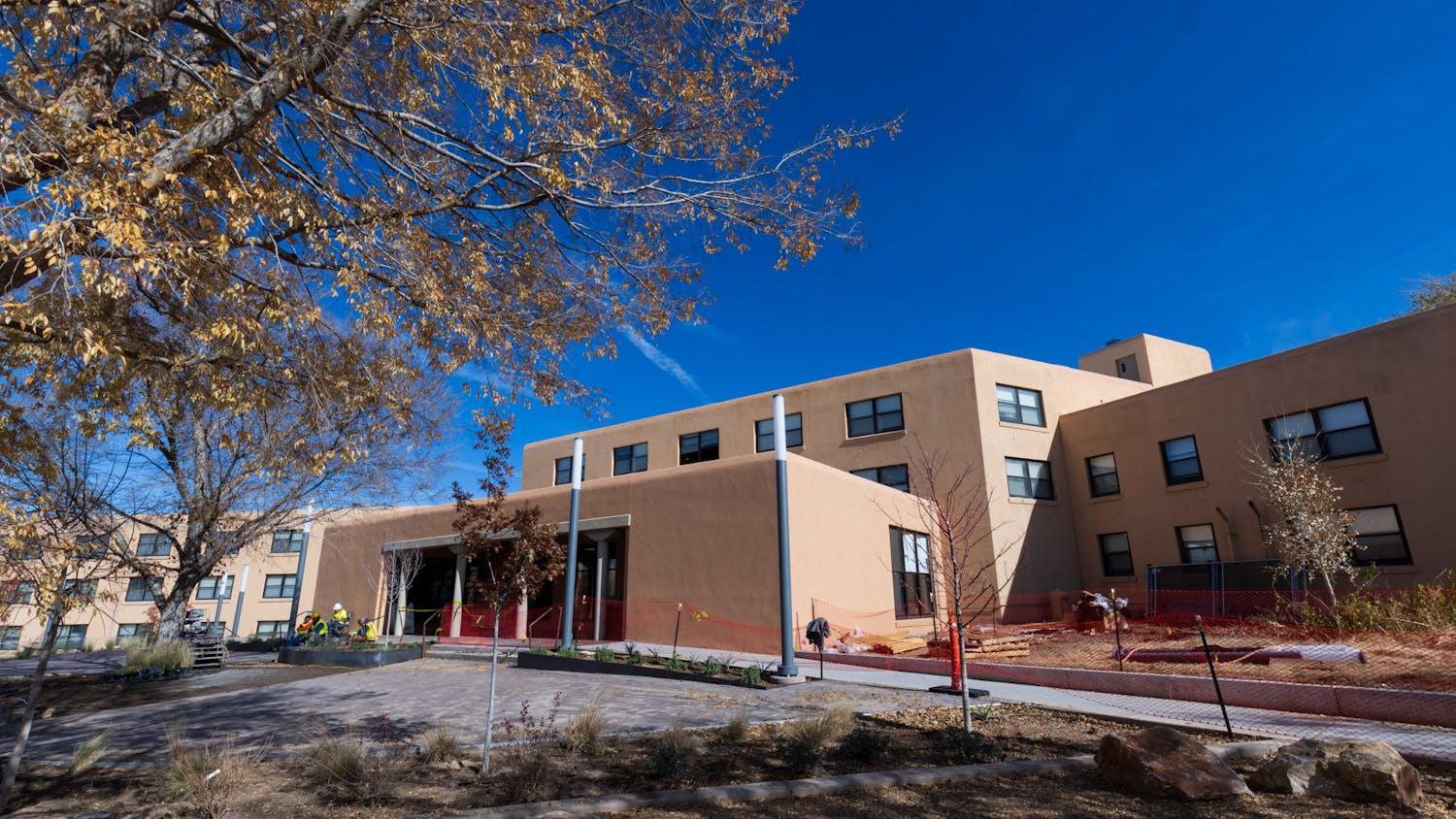“I grew up, in part, between Santa Fe and Las Vegas on my family’s ranch, and since my early days as a kid I used to wander around,” he said. “It’s like a lot of ecologists and biologists: We grew up outside, and it became part of the fabric of our being.”
In addition to having an environment to explore, Muldavin said he was also influenced by his grandmother, who was the first female member of the San Miguel County Water Conservation District. He said she was engaged in environmental efforts throughout the area during the 1960s and ‘70s.
Muldavin would retain his interest in the natural world while going on to study forestry in northern California. Eventually, he returned to New Mexico for a doctoral degree in forest ecology. After that, he had a decision to make.
“At that point I had a choice of either pursuing the standard academic route and finding a college job somewhere in the U.S., or finding something regionally that would keep me closer with my family,” Muldavin said.
He chose the second option, which led him to Natural Heritage New Mexico at UNM. A division of the Museum of Southwestern Biology, NHNM conducts research on the biodiversity of plants and animals in New Mexico’s ecosystems. It also develops methodologies that other agencies can utilize to assist planning and conservation efforts.
Muldavin has helped develop the Rapid Assessment Methodology, which is used to measure how preserved an ecosystem is — particularly near riverlands in New Mexico — within one day. He said that the RAM can be easily taught and used by people with various backgrounds, such as watershed managers or wildlife biologists.
“This gives you a very consistent framework for assessing the ecological integrity for wetlands across the state,” Muldavin said. “You want to be able to do that in the morning and write it up in the afternoon. That’s the goal: a one-day job.”
He said that while spending weeks in an area to research its biodiversity is ideal, many organizations don’t have the time or resources.
In addition to creating methodologies, NHNM is also part of a network called NatureServe, which consolidates information from natural heritage programs throughout the Americas to help guide conservation.
“When we look out our windows, stand in our yards, hike our mountains, we have a front-row seat to our precious natural heritage,” NatureServe’s website reads. “We believe the beauty of natural life that exists all around us must be discovered, documented, protected and saved.”
Similarly, Muldavin is working to update the New Mexico Crucial Habitat Assessment Tool, a web-based map program that measures the conservation value of wildlife habitats mile-by-mile. NMCHAT is part of a larger effort from the Western Governors’ Association Wildlife Council to document crucial habitats in states west of the Mississippi river.
Get content from The Daily Lobo delivered to your inbox
“It’s the first vision of crucial habitat across the west. There’s nothing like it in the world,” Muldavin said. “It will underpin the state’s wildlife action plan, so we can identify where the most important conservation opportunities are and assess the priorities for what kinds of conservation actions should be happening over the next decade.”
Muldavin said that while conservation biology might appear to be purely scientific, human impact on the environment is an important factor. He said that this type of work is difficult because it involves balancing the need to conserve wildlife with human planning and activities.
“Conservation biology is more complex than rocket science because it has the human quotient to it,” he said. “That interaction between the natural and the social is very complex and hard to quantify and theorize about.”
Muldavin said that initially he was more interested in the strictly scientific aspect of ecology, but changes in the climate and the environment have motivated him to work in conservation.
“I do conservation biology because I feel obligated to do it in a rapidly changing world,” he said. “You can’t just sit in your own little eddy of the world; you have to be thinking about the applications of the work that you do.”
In the future, Muldavin said he would like to explore the natural world through his other passion: art and photography. He said that he has done photography for a long time, but his work has changed as he’s become more informed as a scientist.
“I have a real interest, as an artist and photographer, to work on these things in a more abstract way,” Muldavin said. “I do art on the side as much as I can, and try to think of nature and conservation through the keyhole of art as well as science.”
He said that he wants to create something that has the depth of both art and science by being informative and accurate, but not too pedantic or academic.
“It’s important to keep that art side alive in every person, so you can make sure you can be fully human when you approach your problems and consider all of the different aspects involved,” he said. “In conservation biology, we’re doing the same thing. To be a full individual, I think you need to be both an artist and a scientist.”
Lena Guidi is a freelance reporter at the Daily Lobo. She can be contacted at news@dailylobo.com or on Twitter @DailyLobo.






